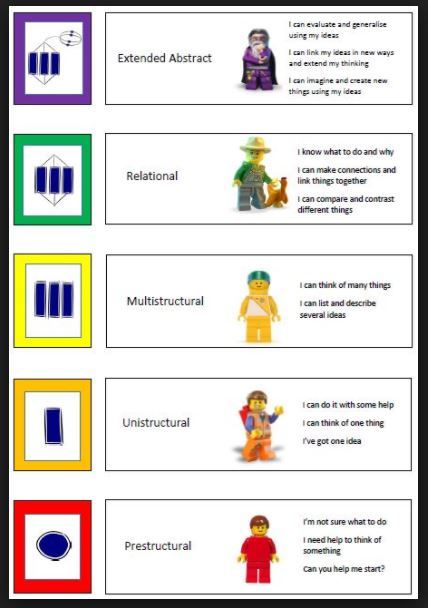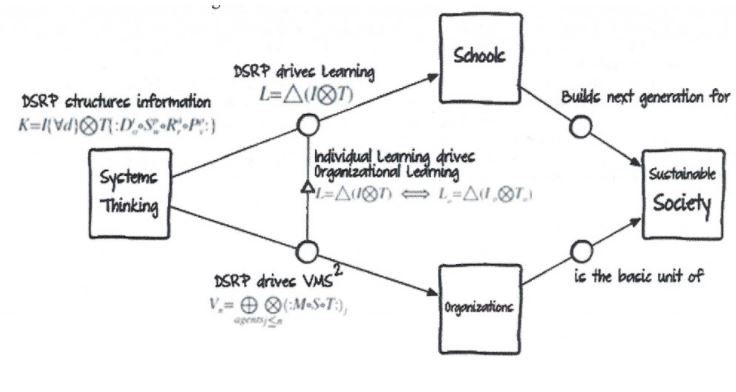I think you’ll agree with me when I say:
“We do not understand the difference between Information and Knowledge.”
As it turns out, most people assume they are the same thing, yet they are not. In fact, Information is required for Knowledge, but we are missing one key element… “Thinking”.
In this article, we will look into the process of learning information, and how we can really transfer it into learned knowledge.
Table of Contents
What is transfer of learning
Professors at Cornell University and authors of Thinking at Every Desk, Derek and Laura Cabrera inform us that Knowledge = Information X Thinking. They are on a mission to introduce “Thinking” back into the classroom. Let me demonstrate one way in which they are doing this.
Through the Cabrera’s Systems Thinking theory of Distinctions – Systems – Relationships – Perspectives (DSRP = “Thinking”), they show us how disparate subjects are interconnected and that DSRP increases our speed of knowing something. Essentially, it will increase our transfer.
Transfer is a way to learn something in one area and apply it in another. We can do this through a variety of ways, yet let’s examine two:
- Vertical Transfer (also known as Far Transfer). A child learns something in third grade and applies it in fourth grade (or even as an adult). This is the more difficult form of transfer as you are applying what you are learning to something completely different — like learning the game of Wei-chi (aka Go) and applying it to strategy.
- Horizontal Transfer (also known as Near Transfer). A student learns something in one subject (i.e. English) and transfers it to another (i.e. Math).
The Cabrera’s illustrate the significance of the transfer of learning. In fact, if a student or person has a high transfer, he or she will then become their own best teacher. As mentioned in Thinking at Every Desk,
“If a student has a high transfer skills, she can learn one thing and then teach herself 10, 50, or 100 additional things.”
Thinking about thinking
When we understand the importance of transfer of learning and use DSRP to bring it about, we see phenomenal results in three important areas:[1]
- Increased Metacognition (thinking about thinking).
- Increased Deep Understanding (you learn the difference between analysis and synthesis).
- Increased Transfer (you are able to make vertical and horizontal connections).
Let’s examine some practical approaches to use in the discovery of these hidden ideas:
Break Apart + Put Back Together = Learning
My absolute favorite transfer of learning technique is one outlined by the Cabrera’s in Systems Thinking Made Simple:New Hope for Solving Wicked Problems. The technique is the “Parts Lessons Firetruck” and is a fun exercise to use with your children.
Using this technique with my 3-year old daughter, I had the opportunity to demonstrate the Systems Rule (or part-whole) lesson with her by building a cardboard firetruck. By examining the firetruck through part-whole, my daughter was able to identify more parts of the truck than before.
Applying what you already know
Vertical or Far Transfer is the most critical. I recommend the following quick video published by Education Week for a deeper understanding of transfer of learning:
Let’s take a quick look at the 5 strategies outline in the video for applying transfer of learning:
- Explicit teaching. Using and applying what you are learning every day (an argumentative essay leads to persuading your boss to give you a raise).
- Group learning. The more you are involved with a group in a classroom, the more likely you will be able to learn in a group while in the workforce.
- Reflection. If taking notes in a class helps you learn a concept, then taking notes in other areas (i.e. class or work) will help you learn there as well.
- Use analogies and metaphors. Analogies and metaphors take what you already know and apply it to a new situation to understand it better.
- Generalizing. Push yourself to generalize broader principles from specific situations. If you study one thing and uncover elements needed to create something, use the same approach and discover key elements for another.
How to apply transfer of learning (Step-by-step guide)
You might be wondering, how can I apply this?
It’s actually quite simple:
Step 1. Use previous knowledge
Let’s say you previously learned how to play the game Wei-chi (aka Go). Using your understanding of the game, you can apply those skills in another context.
Step 2. Applying previous knowledge to a new context (contexts that appear alien to one another)
If you are in a position where you must understand the strategy of another country (for example: China), you could use your previous knowledge (the game of Wei-chi).
Step 3. Strengthening connections
The game of Wei-chi and understanding the strategy of China are two highly abstract (yet identical) concepts. As you dive deep into your learning process (understanding of China), you will find your understanding of Wei-chi will assist you in your conscious search for new connections.
Step 4. Document and reflect on new connections
Make sure to document your ideas and connections throughout the transfer of learning process. Reflect throughout the process and think (cognition) about your thinking (metacognition). This will improve your ability to abstract profound principles underlying the new idea being examined.
Hidden connections between ideas
Lastly, let me demonstrate how I use transfer of learning everyday.
As an author of books on foster care and a former foster child myself, my mind is always coming up with ways to fix the foster care system. One of the things I am currently researching is how to build a more effective and efficient communication network to quickly help a child who is being abused.
Due to my understanding of transfer of learning, I was able to immediately grasp the importance of uncovering the link between two completely different ideas.
First, I came across an article on asknature.org while searching for ways termites and ants communicate. In an article titled Collaborating for Group Decisions, I noticed two key sentences:
- The researchers will develop ad hoc communication networks to spread critical information among first responders, similar to how a virus spreads.
- Models of collaboration based on the study of ants and bees may be useful in understanding the basic principles and best practices when developing strategies to coordinate knowledge sharing in chaotic social settings.
The key elements I connected were: how a virus spreads and knowledge sharing. Thus, I am working on a strategy in foster care to collaborate (and communicate) and spread knowledge like a virus (specifically Influenza A). This led me to an analysis of two key concepts:
- I had to analyze (break apart) the structure of the Influenza Virus and Network Theory (I chose to focus on Small World and Decentralized Networks).
- I then had to synthesize (put them back together as a new whole) and form my idea on how to improve communication and spread knowledge like a virus in the foster care system.
It is only through the discovery of hidden connections between ideas and by introducing “Thinking” back into the equation that we can gain actual Knowledge. A special thanks to Derek and Laura Cabrera for introducing me to DSRP!
I will leave you with one last quote,
“You have brains in your head. You have feet in your shoes. You can steer yourself any direction you choose!” – Dr. Seuss
Featured photo credit: Unsplash via unsplash.com
Reference
| [1] | ^ | Derek and Laura Cabrera: Thinking at Every Desk |
















































